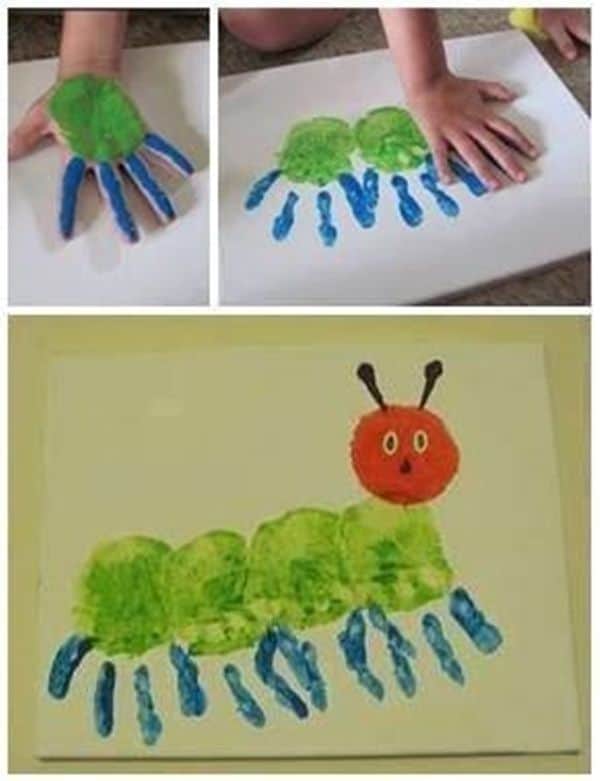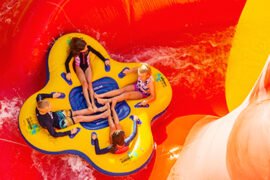Unleash Your Child’s Inner Picasso: Creative Paint Project Ideas
Hey there, awesome parents! ? Are you ready to dive into a world of color and creativity with your kiddos? Well, you’re in for a treat! We’ve got a bucket-load of children’s paint ideas that will not only brighten up your day but also engage your little ones in hours of creative fun. So, grab those smocks, set up your painting station, and let’s get those imaginative gears turning!
Painting: More Than Just a Messy Playtime
Have you ever watched your child swirl their fingers through globs of paint or listened to their gleeful giggles as they mix colors? Painting is a hands-on activity that goes beyond just being a fun pastime. It’s an adventure in sensory exploration, fine motor skill development, and a unique way for them to express their emotions and ideas.
Before we dive into our magical list of paint projects, take a moment to whisper a silent thanks to those washable paints — modern parenthood’s MVP for worry-free paint play! ?
Setting Up Your Home Art Studio
- Protective Gear: First things first, let’s keep those adorable outfits stain-free! Aprons, old shirts, or even dad’s oversized T-shirts can make great protective gear. Don’t forget to cover tables and floors with newspapers or a drop cloth.
- Quality Materials: Opt for non-toxic, washable paints that are safe for children. You’ll also need various brushes, sponges, and maybe even some unconventional tools like forks or cotton balls for texture exploration.
- Easy Clean-Up: Keep a damp cloth or wet wipes handy for quick clean-up. Also, ensure there’s a designated area for drying artwork to avoid smudges and drips.
Simple Yet Engaging Children’s Paint Ideas
And now, without further ado, here are some wonderful paint ideas to kick off your child’s journey into the land of imagination:
Finger Painting Fun
Begin with the basics – finger painting is a fantastic sensory activity for children. You can use it to introduce primary colors and the magic of color mixing. It’s a simple start, but it provides a rich platform for exploration.
Materials Needed:
- Non-toxic finger paints
- Paper or cardstock
- Smocks or protective clothing
Project Steps:
- Set up a clean workspace with all materials within reach.
- Guide your child’s fingers into the paint and let them make their mark—handprints, swirls, and dots on their paper canvas.
- Encourage them to see what happens when they mix colors together directly on the page.
As they play, you can spark discussions about the colors they’re using and what feelings those colors might represent. This opens a doorway for emotional expression and helps build their language and communication skills.
Stamping and Printmaking Magic
Let’s elevate the creative experience with some stamping and printmaking! This technique allows children to discover patterns, symmetry, and the joy of repetitive design.
Materials Needed:
- Washable paints in various colors
- Cardstock or construction paper
- Potatoes, apples, or sponges cut into shapes
Project Steps:
- Slice fruits or sponges into halves or fun shapes. If you’re using potatoes, carve designs into the cut side to create a stamp.
- Dip your homemade stamps into the paint and press them onto the paper to create colorful patterns and shapes.
- Give your child the freedom to arrange the prints in any order, creating their own unique, patterned artwork.
This artistic technique is not just entertaining but teaches your child cause and effect as they see the direct results of their stamping actions. Isn’t it exciting to watch their little minds work?
Alright, creative comrades, we’ve only grazed the surface of what’s possible with pint-sized Picassos and their paint pots. But hey, we’ve made a vibrant start, and I can’t wait to see where your painting adventures take you and your little ones!
Stay tuned for more inspiring ideas as we continue to explore the rainbow-hued horizons of children’s artistry together. Remember, every stroke, splatter, and dab is a step towards your child’s creative development. So, keep those brushes ready, your imagination open, and let the colors guide you to beautiful moments of learning and laughter. Onward to part two!

5 Things Parents Should Know When Preparing for Children’s Paint Activities
1. Choosing the Right Space
Designate a specific area in your home where your child can paint and be messy without worry. The right space is easy to clean and safe for your child to explore their artistic impulses. Choose a room with a tile or linoleum floor rather than carpet, as they are simpler to clean, and make sure it’s well-ventilated to disperse paint fumes.
2. The Importance of Supervision
Always supervise your young ones during painting activities, not just to prevent a mess, but to guide their exploration and ensure their safety. Be there to encourage their creativity, help them understand how to use new tools, and support them in expressing themselves through art.
3. Preparing for Spills and Stains
Accidents happen, especially with eager little artists at work. Be prepared for spills and stains by keeping cleaning supplies close to your painting area. Old rags, a bowl of water, paper towels, and non-toxic cleaning agents will make for a quick cleanup, allowing the fun to continue with minimal interruption.
4. Dress for the Occasion
Make sure your child is dressed appropriately for a painting session. Old clothes that can get stained, aprons, or smocks are perfect as they protect your child’s everyday wear and keep laundry to a minimum. It’s all about freeing them to express themselves without the worry of ruining their favorite outfit.
5. Emphasizing the Process, Not the Product
Children learn and grow through the process of creating. While a beautiful end product is wonderful, the focus should be on the experience of painting itself. Praise their effort and creativity, ask open-ended questions about their work, and avoid dictating how their artwork should look. This approach nurtures confidence and creativity in children.
Extra Tips for Painting with Toddlers and Young Children
With toddlers and young children, start with just a few paint colors to avoid overwhelming them. Clear instructions on where to paint and setting boundaries can help keep the activity enjoyable and manageable. Use this time to teach them about colors, shapes, and textures in a relaxed and playful environment.
Encourage them to describe what they’re painting and share stories about their creations. It’s not just about painting; it’s about starting a conversation and letting their imaginations run wild. Use phrases like, “Tell me about your painting,” rather than “What is it?” to keep them talking and thinking creatively.
Integrating themes or stories can also add depth to the painting experience. For instance, painting a scene from their favorite book can help with comprehension and association, while also sparking joy in seeing their literature come to life.
And that’s a wrap on our brief overview to get you and your little ones geared up for painting galore! The joy of painting with children lies in the shared experience, the memories created, and the development that occurs in those colorful moments. Keep these tips in your back pocket as you set out on this vibrant adventure, and remember, every bit of paint and every little handprint is a part of the incredible journey of growth for your child.
Excited for more? Stay with us as the kaleidoscope of children’s paint ideas continues to unfold. There’s a whole world of brush strokes waiting to be discovered, and we’re here to guide you every step of the way. Let’s nurture those budding artists together!
See more great Things to Do with Kids in New Zealand here. For more information see here
Disclaimer
The articles available via our website provide general information only and we strongly urge readers to exercise caution and conduct their own thorough research and fact-checking. The information presented should not be taken as absolute truth, and, to the maximum extent permitted by law, we will not be held liable for any inaccuracies or errors in the content. It is essential for individuals to independently verify and validate the information before making any decisions or taking any actions based on the articles.




